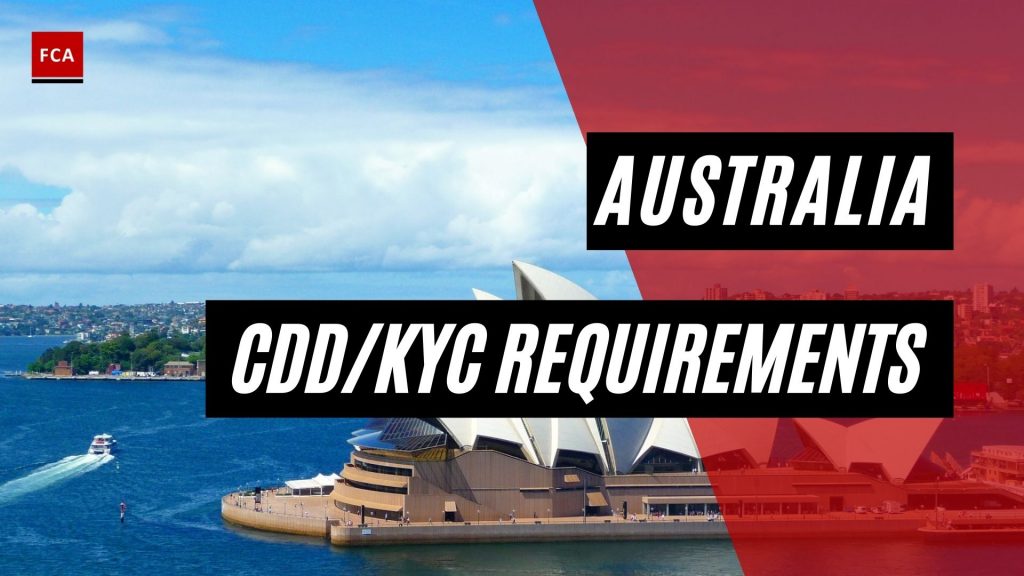Australia’s AML/CFT regulatory requirements are supervised by the Australian Transaction Reports and Analysis Centre (AUSTRAC), an Australian government financial intelligence agency responsible for monitoring financial transactions to identify money laundering, organized crimes, tax evasion, welfare fraud, and terrorism. This article elaborates on ‘Overview Of Key Regulation And CDD And KYC Requirements In Australia: Responsible Entities’.
Implementation of AML/CTF act in Australia
Australia has a strong regime to fight money laundering and terrorism financing. The government of Australia has implemented the Anti-Money Laundering and Counter-Terrorism Financing Act 2006, known as the AML/CTF Act. This provides the means to help detect and deter money laundering terrorism financing and provides financial intelligence to revenue and law enforcement agencies. The AML/CTF Act implements a risk-based approach to regulation.
The obligation of businesses
Businesses must meet the minimum obligations set out in the AML/CTF Act and AML/CTF Rules. Beyond that, each business must assess the risks of potential money laundering or terrorism financing when providing a designated service to a customer. Obligations such as KYC transaction monitoring and ongoing CDD are all designed to assist regulated businesses in identifying suspicious matters and reporting them, regardless of their perceptions of risk.
Australia being one of the largest financial sector
Australia’s financial sector is the 12th largest in the world and is dominated by banks. Total banking sector assets amount to over 200% of GDP (over AUD 324.6 billion). Australia’s banking sector is the third-largest in the Asia-Pacific region, following Japan and China, and is highly concentrated, with the four largest banks. The Australian banking system comprises a mix of domestic and foreign players, with 48 of the 68 licensed banks being subsidiaries or branches of foreign banks.
Australia’s remittance providers
Australia has many remittance providers, which provide an important service to Australia’s significant multicultural society. MVTS are offered by remitters, which fall into three types: remittance network providers (RNPs), agents or affiliates of the RNP, and independent remittance providers.
Over 6,000 reporting entities registered with AUSTRAC operate in one of these three categories in the remittance sector. More than 5,500 of these entities are agents or affiliates of RNPs, and the value of transactions flowing through the remittance sector is relatively concentrated. The top five networks account for 90% of all MVTS.
Outside of these networks, there are approximately 650 independent remitters registered with AUSTRAC. In terms of value, international funds transfers through remitters accounted for 1.7% or AUD 66 billion of over AUD 3.9 trillion aggregate international funds transfers in 2013. The banking sector accounts for more than 95% of the total cross-border fund transfers.

AML/CTF reform
Australia’s AML/CTF regime has undergone significant reform since the last assessment in 2005. The most important reform was enacting the AML/CTF Act in 2006, which expanded the scope and coverage of Australia’s AML/CTF regime. Businesses with AML/CTF obligations increased from approximately 3,000 under the previous AML/CTF regime to about 15,000 under the AML/CTF Act. The AML/CTF Act focuses on the services to be regulated, called “designated services” in the Act, rather than the nature of the entity that provides the service.
Entities that are subject to AML/CTF act
Financial institutions, gambling service providers, bullion dealers, and remittance dealers are all subject to the AML/CTF Act. Reporting entities offer certain listed services and are overseen by AUSTRAC for compliance with the Act.
Other DNFBPs (for example, real estate agents, precious stone dealers, lawyers, notaries, other legal professionals and accountants, and trust and company service providers) are only covered when they provide one of the designated services, for example, when they are essentially acting in the capacity of a financial institution under the FATF Recommendations. There are no services dedicated to real estate agents, precious stone dealers, or trust and company service providers.
AML/CT requirements for reporting entities
The AML/CTF Act requires REs to establish an AML/CTF program, divided into Part A and Part B. The primary purpose of Part A of the standard AML/CTF program is to identify, mitigate and manage ML/TF risks that a reporting entity faces and includes AUSTRAC has the powers to grant exemptions to specified persons from all or parts of the AML/ CTF Act.
In practice, it has granted full or unconditional exemptions to various applicants, including those operating in private banking, prepaid cards, or investment funds. According to the AUSTRAC Exemption Policy, exemptions are considered based on several factors, including, but not limited to, the risk profile of the applicant, the designated service, issues of competitive neutrality, and the level of regulatory burden to which the applicant is being subjected. While AUSTRAC considers these exemptions on a case-by-case basis, the assessment team was not convinced that the exemptions were sufficiently justified as low risk.
Transition plan
Financial institutions’ existing measures on CDD and identifying beneficial owners and PEPs are not in line with FATF standards. As mentioned above, the Rules Amendment commenced on June 1st, 2014. The implementation period is outlined on the AUSTRAC website and is accompanied by policy principles issued by the Minister for Justice.
The policy principles indicate that certain enforcement actions, being an application for a civil penalty order or an injunction, the issuing of a remedial direction or the imposition of a requirement to undertake an external compliance audit, will not be taken by the AUSTRAC CEO during the period of the policy principles for breaches of the additional CDD requirements, provided the reporting entities demonstrate that they have taken “reasonable steps” to comply by January 1st, 2016. What constitutes “reasonable steps” is also set out in the policy principles. This includes requiring reporting entities to adopt a board-approved transition plan to comply, setting out how it will comply with the new obligations.
The transition plan was required to have been adopted by November 1st, 2014. Furthermore, when reporting companies can comply with the rules through their current activities, they must do so to show that they have made reasonable efforts. Customers identified as high-risk after June 1st, 2014, but before the full implementation of the new responsibilities, must be retrospectively identified at the level needed by the new obligations.
Compliance of the reporting entities
Based on interviews with reporting entities, assessors determined that at the time of the onsite, most reporting entities were not able to fully implement the requirements in the Rules Amendment; most continue to operate under the pre-June 1st, 2014 requirements.
While all the reporting entities endeavor to comply as soon as possible, Australia-based reporting entities generally responded that they were unlikely to be able to comply with the new requirements ahead of January 1st, 2016. Most sector representatives indicated that enforcement action would be taken against them if they took until that time to implement them. Several international reporting entities noted that they were already implementing a number of the requirements based on their foreign obligations and expected to comply with the Rules relatively quickly.
Employees’ Awareness Training
AML/CTF risk awareness training for employees, employee due diligence program, oversight by boards and senior management, and procedures for an independent review of the program. The primary purpose of Part B is to set out the reporting entity’s applicable customer identification procedures (ACIP), including beneficial ownership, ongoing customer diligence, and enhanced due diligence.
Regular risk assessment
The AML/CTF Act requires reporting companies to conduct risk assessments regularly. This comprises evaluating what the reporting entity will need to undertake to identify, reduce, and manage the risk of the reporting entity being involved in or aiding ML or TF. A reporting institution must evaluate its client categories, the sorts of designated services it offers, how it distributes designated services, and the foreign jurisdictions with which it trades in its risk assessment, according to the AML/CTF Rules.
Organizations generally understand reporting obligations well, and they are filing SMRs. As AUSTRAC is both the FIU and the AML/CTF regulator, reporting of SMRs and other reporting obligations such as IFTIs and TTRs is often the focus of its engagement with financial institutions and DNFBPs. In this regard, the quality and volume appear to meet AUSTRAC’s expectations. Overall, the assessors felt that reporting entities effectively implemented the SMR requirements.
Final Thoughts
Australia’s AML/CFT regulatory requirements are supervised by AUSTRAC which is also responsible for monitoring financial transactions to identify money laundering, organized crimes, tax evasion, welfare fraud, and terrorism. This article elaborates on ‘Important Overview Of Key Regulation And CDD And KYC Requirements In Australia In 2022’.








